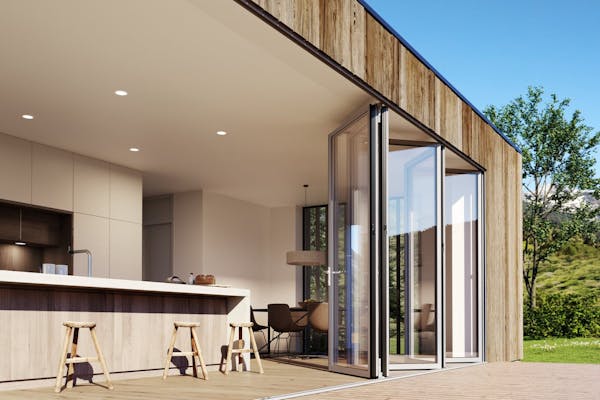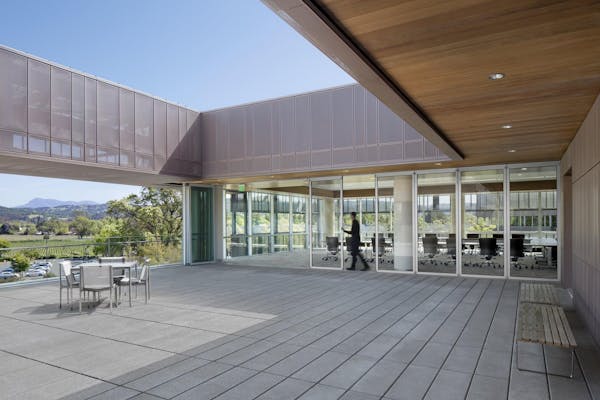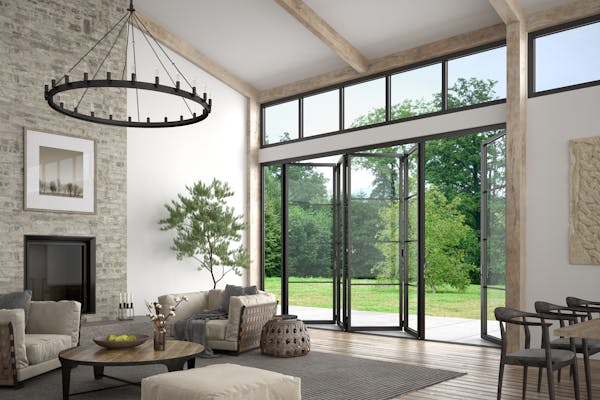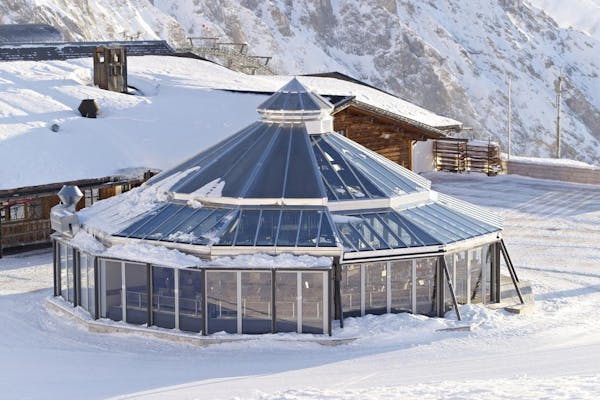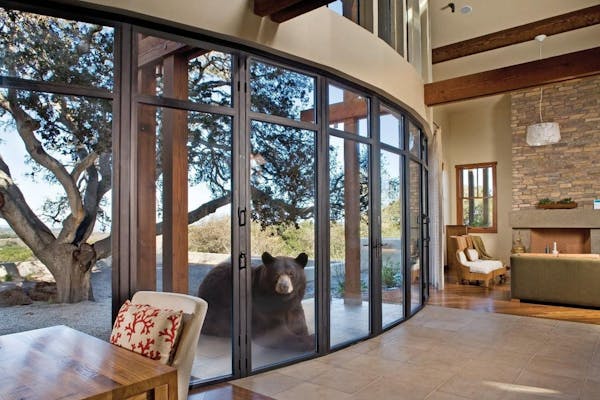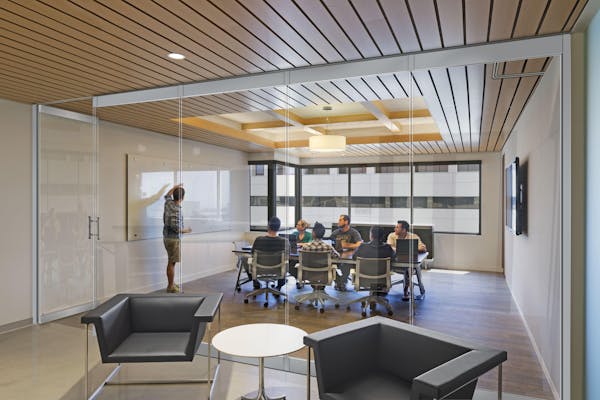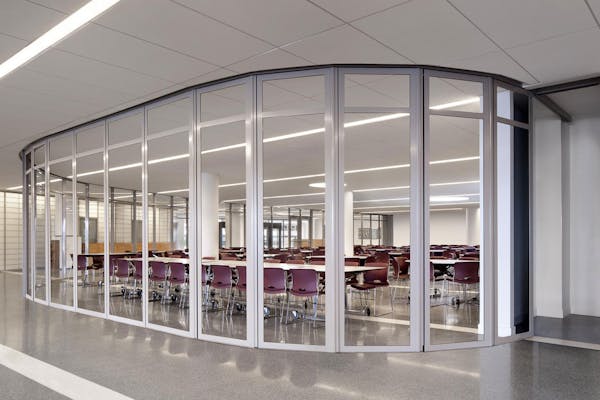Houzz Tour: Recycling an Old Cabin in the Sonoma Wine Country
By Karen Egly-Thompson, Houzz Contributor , July 11, 2016
Knotty cedar planks combine with Cor-Ten steel in a new modern home with a view worth raising a glass to
Falling for a stunning valley view surrounded by vineyards was the easy part for these California homeowners. Figuring out what to do with the dark, uninsulated log cabin kit home on the site was the hard part. Without a visual or physical connection to the landscape, the cabin didn’t seem worth overhauling. Instead, the homeowners decided to build a new home using the wood from the cabin to create something with a more cohesive relationship to the site.
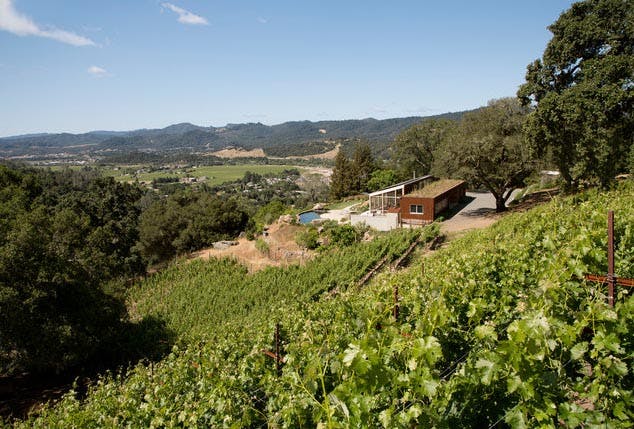
Houzz at a Glance Location: Sonoma County, California Size: 2,600 square feet (242 square meters), including a screened porch that’s 450 square feet (41.8 square meters), on 7.7 acres of land; three bedrooms, 3½ bathrooms Year completed: 2015 Designer: Turnbull Griffin Haesloop Sonoma County is known for wine and beautiful landscapes, but the orientation of the original log cabin didn’t take advantage of the site’s panoramic vistas or the existing pool on the south side of the home. Having grown up in houses with abundant screened porches, the homeowners sought a design with considerable connection between indoor and outdoor space — but one with minimal site impact. This photo shows how the rectilinear shape of the new home complements the hilly terrain. The front facade is to the right, and the angular form on the rear of the house is a partial-length screened porch.
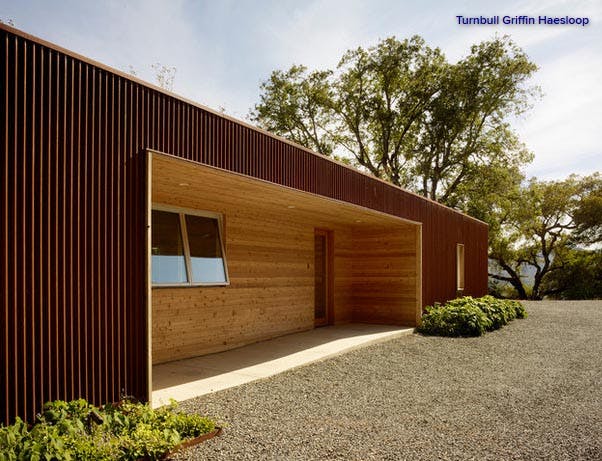
The front facade of the house marries old with new. Knotty cedar planks, salvaged from the log cabin, were remilled into 5-inch-wide planks and used for cladding, highlighted here in the recessed entryway. Corrugated Cor-Ten steel cladding on the rest of the house provides a warm but distinct contrast. In the spirit of weathered Cor-Ten, the cedar planks were left untreated so that they also will take on a patina over time.
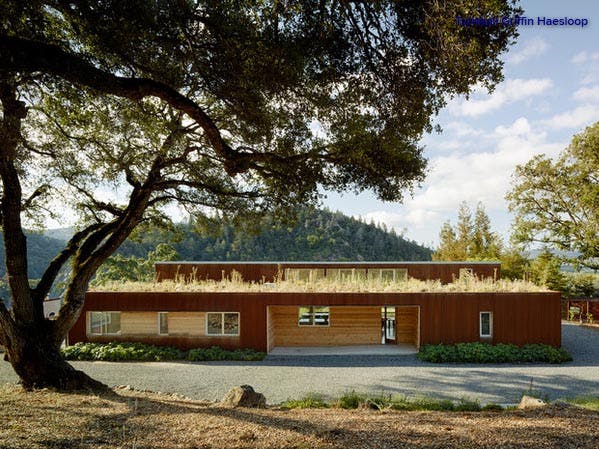
A living roof, combined with the low-slung rectilinear shape, helps blend the new home into the landscape. Aside from its unifying aesthetic, the garden roof helps insulate the house. Because garden roofs can weigh 25 to 45 pounds per square foot, project architect Mary Griffin says planning for the roof included sizing the wood framing to handle the weight of the soil, and incorporating a slight slope. The only maintenance required, she says, is occasional weeding.
Garden roof system: American Hydrotech

The rear of the house features large window openings to maximize the valley view. However, only half are actual windows. While the two areas share the same architectural rhythm, a screened porch makes up the right half, shown here overlooking the cedar hot tub. A bank of windows on the left side borders the living space.
Sun shades cantilevered over the living room portion, Griffin says, were designed to keep much of the southern sun from reaching deep into the living room. Special window glazing also helps protect the interior from ultraviolet light.
This section of the home has a standing-seam metal roof with a photovoltaic array for electrical generation and solar thermal hot water panels. However, Griffin says the house is also tied to the electrical grid. Hot water is heated using an Altherma air-to-water heat pump that is housed in a small outbuilding. Heating and cooling are through water piping embedded in the concrete slab.
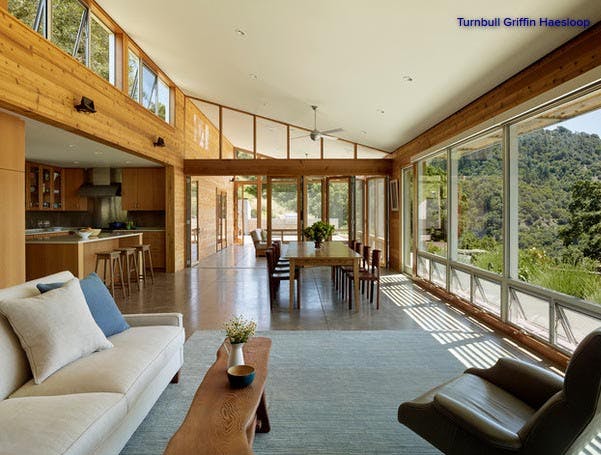
Touches from the former home don’t stop on the exterior but extend inside too. Instead of standard drywall, cedar planks refurbished from the cabin line the walls of the home’s central core. Orienting the planks horizontally instead of vertically makes them look more contemporary than camp.
The lower windows here open for ventilation, and solar shades block out glare when necessary. The furnishings are minimal and in midcentury modern style.
Windows: Blomberg Window Systems; Partitions: NanaWall
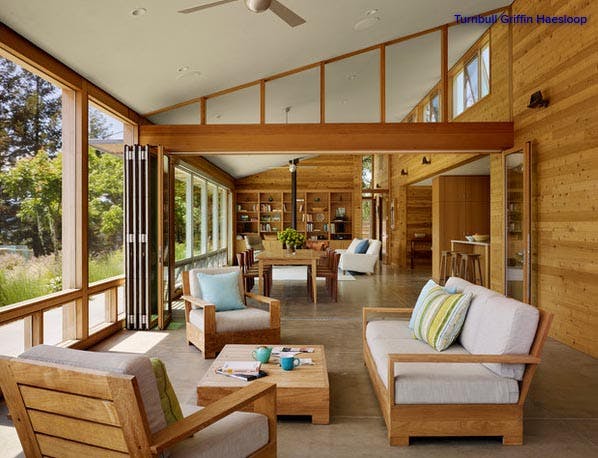
A folding glass partition wall “separates the ‘exterior’ elements of the screened porch from the rest of the house,” Griffin says. The partition wall, shown here from the porch in an open position, divides most of the space, but a single hinged door on the right lets the homeowners pass through the two spaces when the partition wall is closed. Tracks in both the floor and the beam above support and guide the folding components. The stationary glass wall above lets light stream through both spaces. On cold days, a wood-burning stove helps warm the living room.
Partition: NanaWall Systems; wood-burning stove: Rais
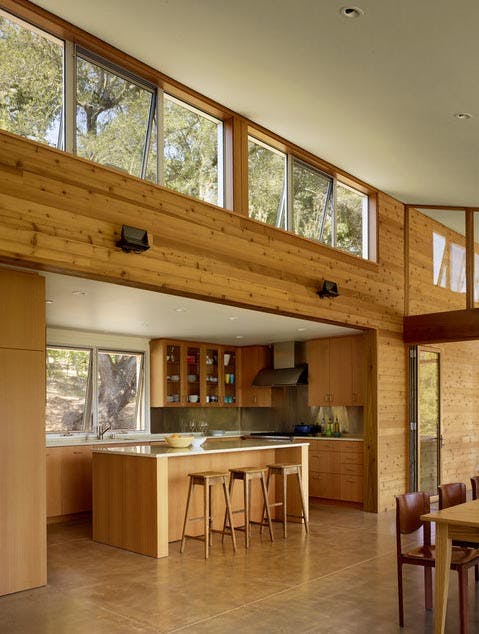
The open floor plan allows for easy circulation as well as the flow of light and air through the space. The kitchen has custom-made cabinets and an island made of western red cedar veneer.
Combined with a stainless steel backsplash and recycled glass countertops, the kitchen finishes subtly complement the cedar wall planks used throughout the interior.

Polished color-impregnated concrete floors throughout provide underfloor radiant heat and a neutral backdrop to highlight the natural materials and landscape outside.
While too pretty to be called a mudroom, the area to the right of the front entry is where boots, hats and jackets are stored. Built-in drawers hide smaller items.
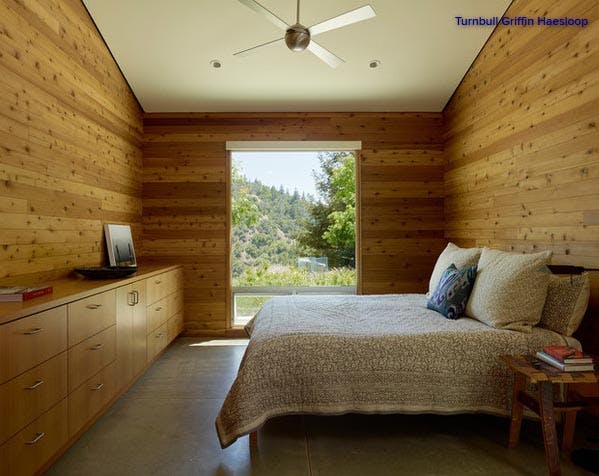
The master suite sits at the rear corner of the house off the living room. Like those of the public living space, its walls are also sheathed in cedar planking. Knots and striations in the wood add enough texture to balance its delightfully spare layout.
Built-in bedroom storage is made from the same western red cedar used in the kitchen. A roller shade is hidden in the window valance for light control.
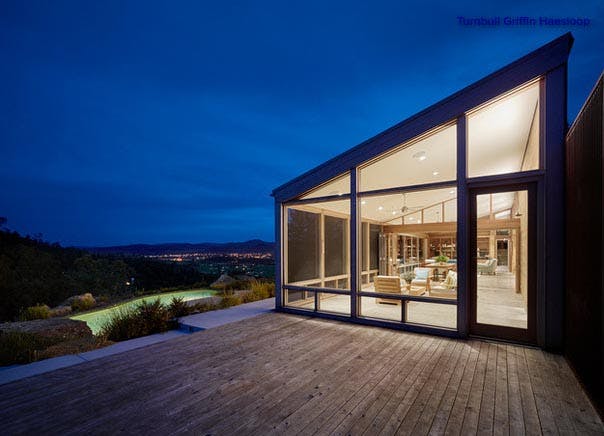
Here’s a view of the screened porch from the patio during the evening. Griffin says the recessed light fixtures in the main living space are LED, and interior wall sconces provide additional illumination at night. “High lighting levels were not an owner request for this project,” Griffin says.
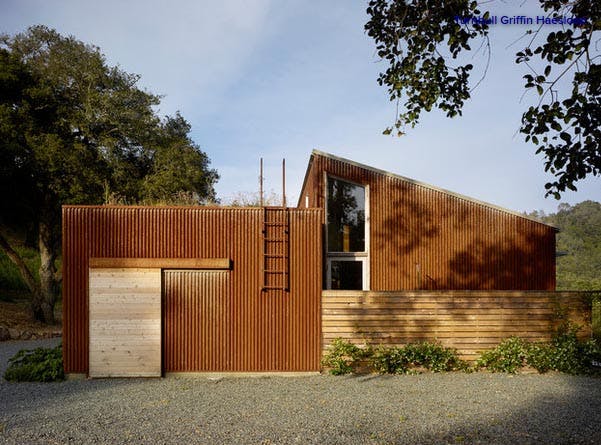
The sliding barn door on the west facade opens to a mechanical services area. The ladder to the roof is for maintenance access.
The east facade of the house, outside the master bedroom, features an outdoor shower. Wood fencing provides privacy.
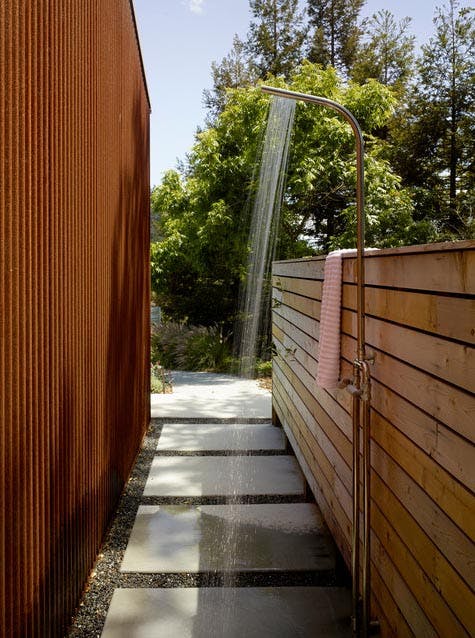
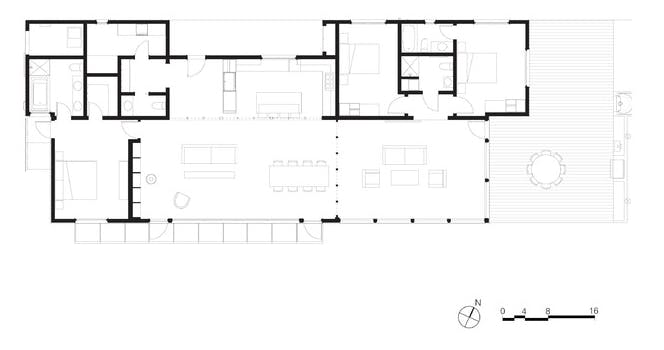
The floor plan is oriented with the entry at the top (north facade), and the living-dining room, screened porch and master bedroom on the bottom (south facade). Two additional bedrooms are located at the front side of the house, accessed from the screened porch. A powder room and laundry room are to the left of the entry. Structural engineer: MKM & Associates Landscape architect: Daphne Edwards Contractor: Kennedy Construction
